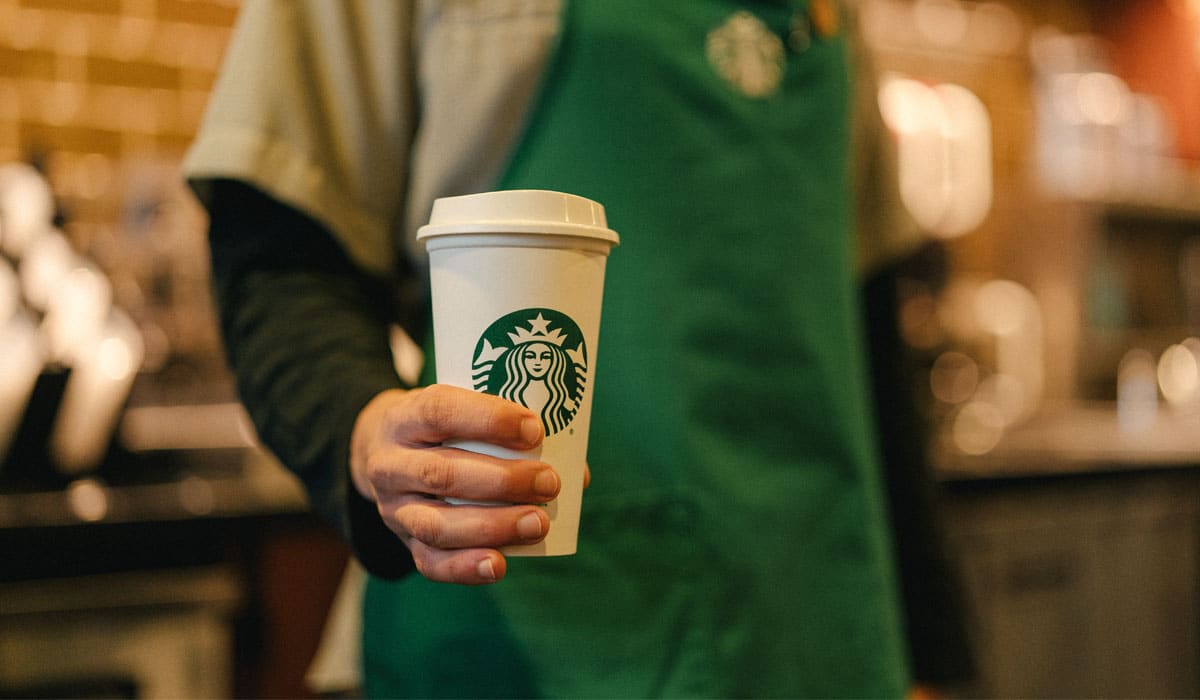The COVID-19 pandemic has pushed Starbucks to accelerate its plans to relocate low-performing stores and transform their formats.
Starbucks originally had a broad, three to five-year plan to move units—such as those in low-traffic malls—to higher-performing areas that can utilize drive-thru. That timetable has been moved up to the next 12 to 18 months.
The coffee chain also wants to open more pick-up only stores, especially in dense metro areas. The first Starbucks Pickup store opened in New York City nine months ago. Pre-COVID, roughly 80 percent of sales were to-go.
“By blending traditional Starbucks stores in dense markets with these new Starbucks Pickup stores optimized for the mobile order occasion, we not only improve the customer experience for those who want to sit in our store and enjoy their beverage, but also create a great experience for those customers who want a convenient way to pick up their beverage on-the-go,” said Starbucks CEO Kevin Johnson in a statement.
“In addition to more pickup stores, our customers will soon see more curbside pickup options as well as delivery—all formats optimized for the current crisis and a future of changing consumer expectations for the third place across the U.S,” he continued. “While the look and feel of many stores will change, the one constant that remains is the human connection made possible by partners who proudly wear the green apron.”
THE STARBUCKS RESPONSE SO FAR
The pivot to off-premises begins
A two-week dining-room shutdown goes into effect for Starbucks
Closures extend into at least May
Starbucks to provide direct relief grants to employees
Starbucks provides sales update, says it began preparations in February
A look at why May makes sense for Starbucks to reopen
COVID-19 has cost Starbucks $915 million so far
Starbucks opens 85 percent of corporate stores in early May
STAY UP TO DATE WITH OUR CORONAVIRUS LANDING PAGE
Starbucks began reopening a significant amount of domestic stores during the second week of May. It expects more than 90 percent to be open by early June. Johnson said that so far, the brand is performing better than forecasted. In the past week, Starbucks has regained 60-65 percent of its prior year same-store sales in the U.S. The company is hoping those figures improve even more as it launches the new summer menu, which includes an Iced Guava Passionfruit Drink, the Grilled Chicken and Hummus Protein Box, the Unicorn Cake Pop, and the return of the S’mores Frappuccino Blended Beverage. In China, stores have reached about 80 percent of prior year comps.
Johnson acknowledged that until traffic rebuilds, restricted operations will limit the number of available hours for employees. Because of that, Starbucks is working with employees to ensure they understand their options of whether to stay with the brand or move on. The company extended “Service Pay”—an additional $3 per hour for working employees—through the end of May and lengthening the expansion of its “Catastrophe Pay” for those who’ve been diagnosed or exposed to COVID-19, employees at closed stores, and parents with childcare challenges. But those expanded benefits are being phased out as stores reopen.
For workers who stay, the brand is extending its COVID-19 unpaid leave policy through September. Under this policy, workers can use Starbucks’ benefits while also accessing emergency benefits granted by the CARES Act. The coffee chain will also cover healthcare premiums for eligible workers on COVID-19 leave.
“With health officials’ recommendations and evolving local governments’ directives, it may seem that the business environment during this pandemic is ever-changing. Regardless, the path for Starbucks has been clear and consistent since the beginning of this pandemic,” Johnson said. “Our goal has been to protect customer and partner safety, support local government and health officials while working to exceed their guidelines for safety, and to show up in a positive way for the communities we serve. This much I know is true: connection and community are fundamental to humanity. As we gradually come out of isolation, people will continue to crave connection and crave a sense of community.”
Starbucks’ Q2 same-store sales declined 3 percent year-over-year after seeing growth of 8 percent in the first 10 weeks of the quarter. At the end of Q2, Starbucks had about $2.5 billion of cash and cash equivalents on its balance sheet.










